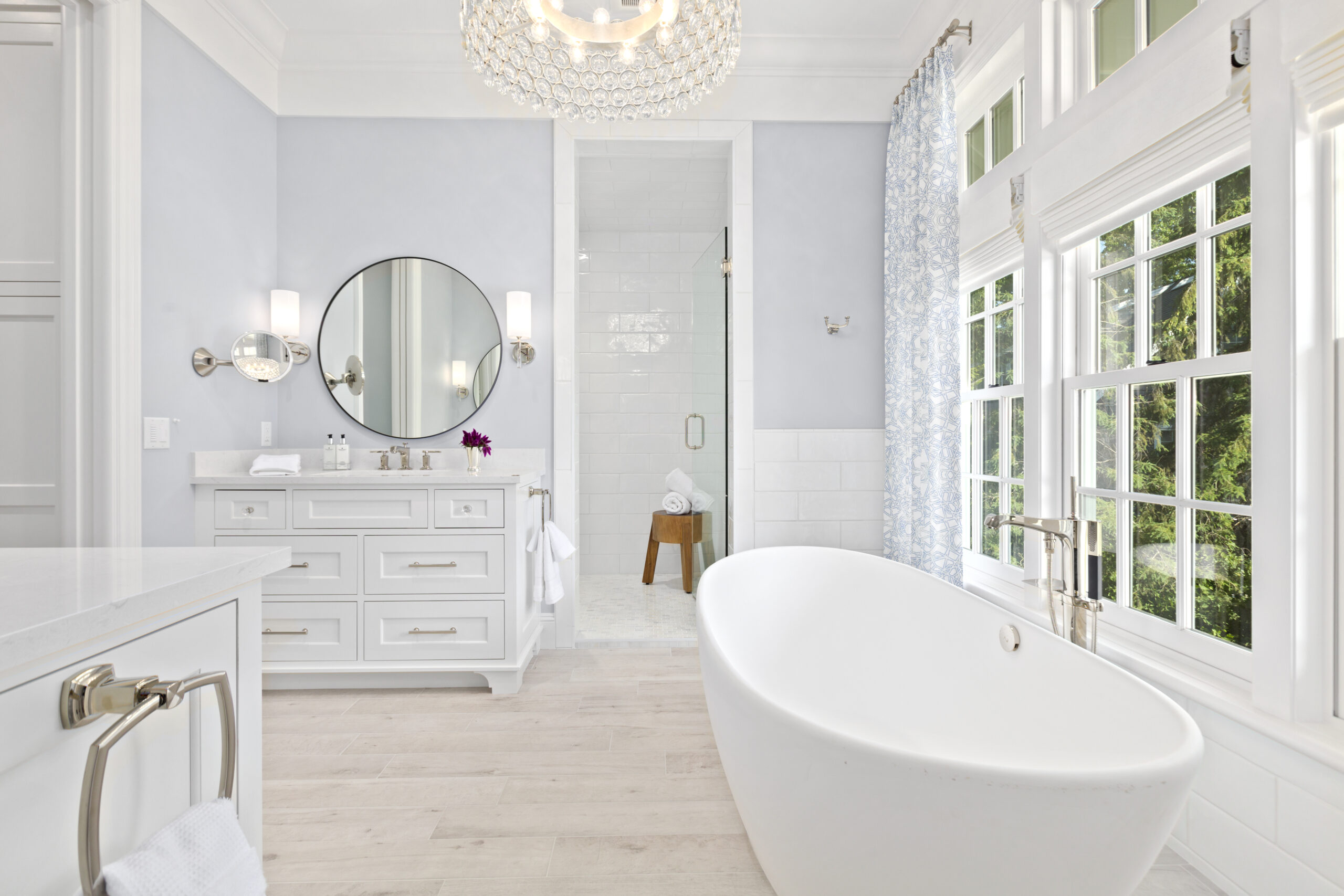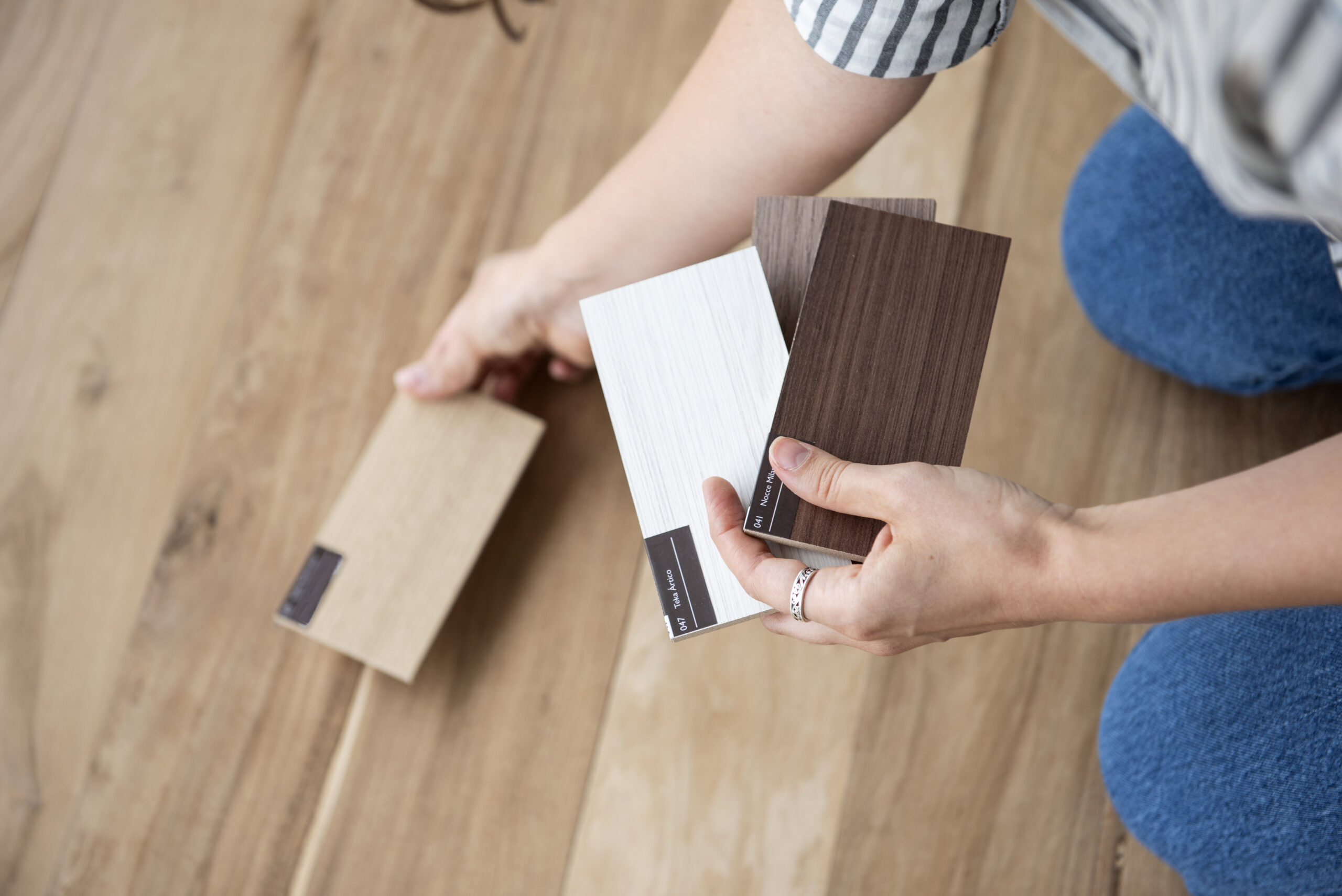If you’ve ever tried to pick hardwood floors, you know it’s not as easy as it looks. You start with a simple idea—I just want beautiful floors!—and suddenly, you’re deep in a rabbit hole of solid vs. engineered, wide planks vs. narrow, beveled edges vs. smooth, matte vs. satin finishes… and let’s not even get started on undertones.

As a decorator, I help clients through this decision all the time. I know how overwhelming it can get when you’re staring at what feels like a million options and second-guessing every choice. But now that I’m choosing for my own home build, I really understand how tricky it is.
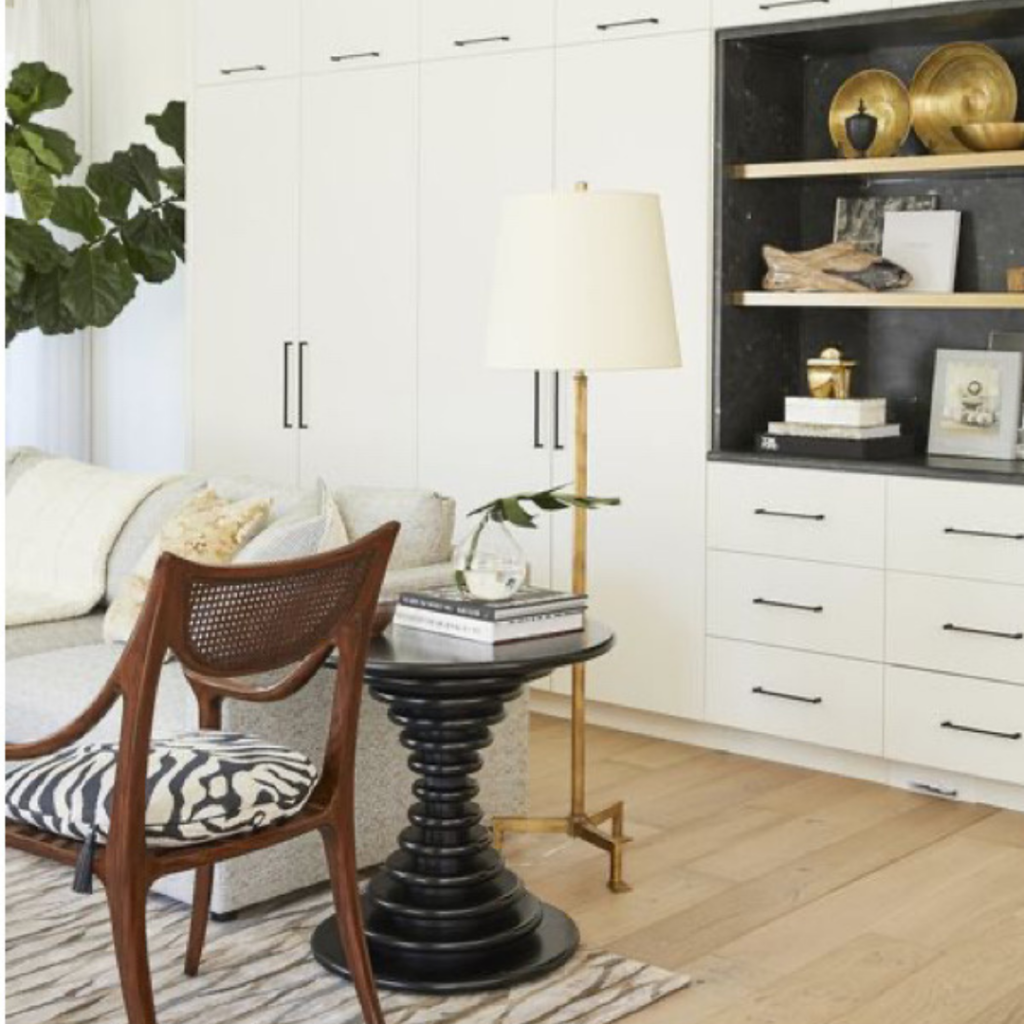
I had to take my own advice—go in with a plan, not just browse aimlessly. I made a checklist of what I wanted: wide planks, a neutral light brown tone, minimal knots, and a matte finish. If a sample didn’t check all the boxes, I didn’t overthink it. That’s the key—knowing what you’re looking for before you start shopping so you don’t get overwhelmed by all the possibilities.
After a lot of research, showroom visits, and testing samples in every possible light, here’s where I’ve landed and what I’ve learned along the way.
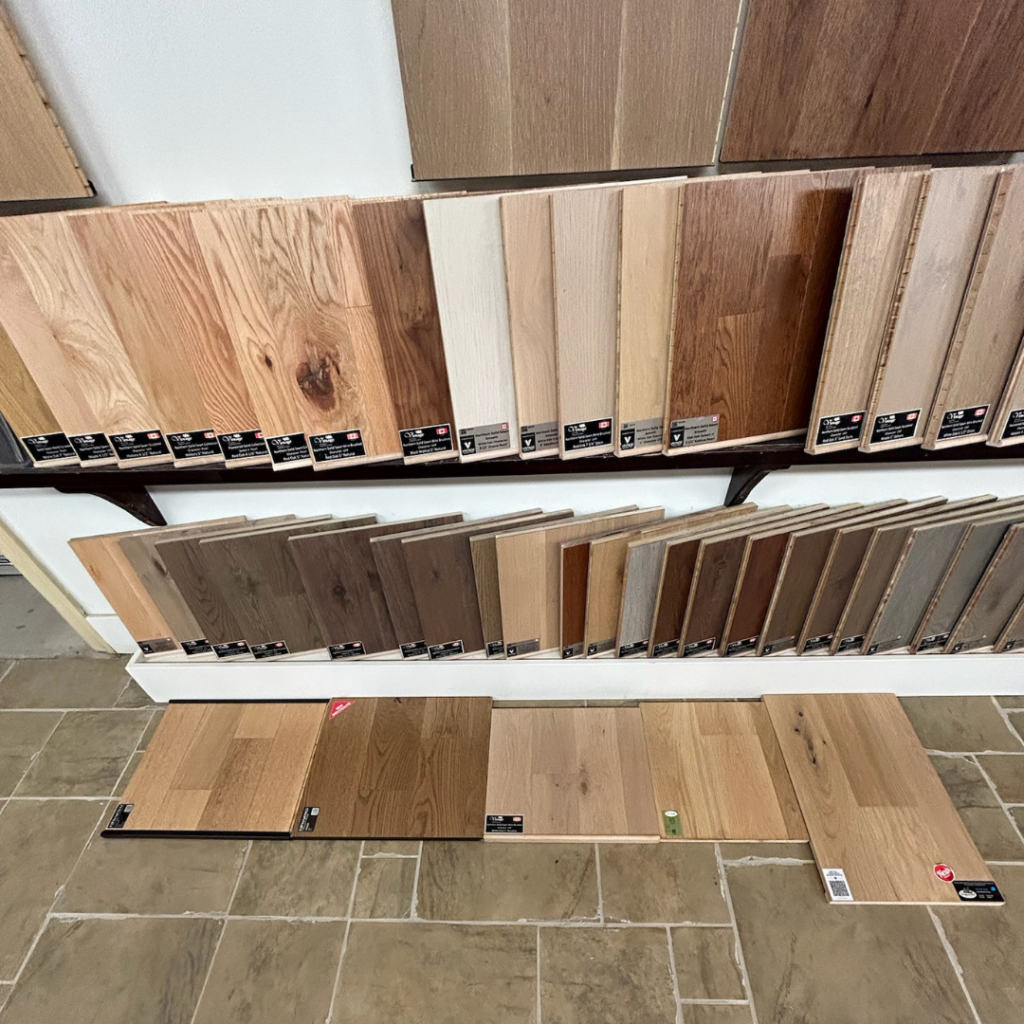
Why Engineered Hardwood?
Let’s start here, because if you’ve been flooring shopping lately, you’ve probably noticed that engineered hardwood is everywhere. It’s not just a “cheaper alternative” to solid wood anymore—it’s become a go-to for designers and homeowners who want wide-plank, real-wood floors with better stability and fewer worries.
Here’s why I’m choosing engineered hardwood for our main floor:
It’s real wood—just built smarter.
Engineered hardwood has a real hardwood top layer, so you get the look, texture, and feel of solid wood—just with a more stable construction underneath. It won’t expand and contract the way solid wood does, which is a big deal in Ontario’s climate.
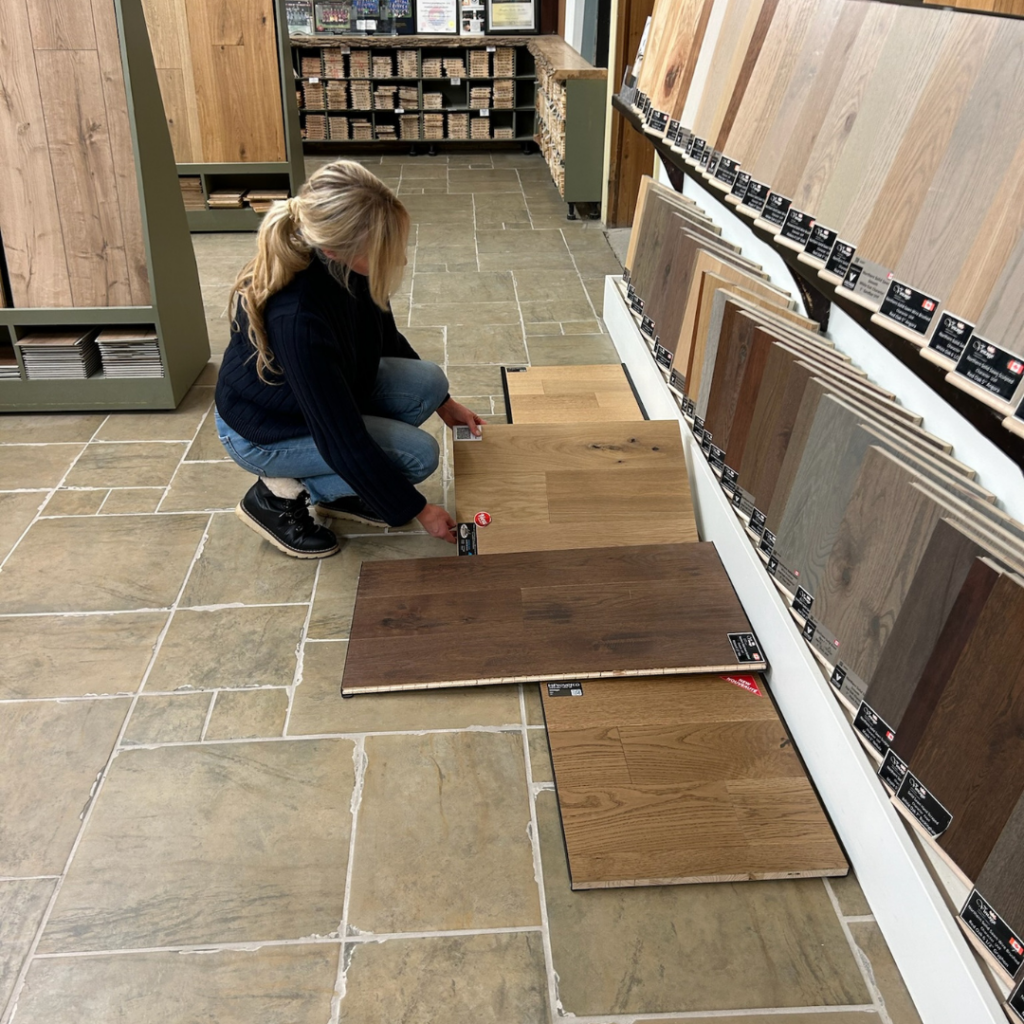
It allows for wider planks.
I love the seamless, expansive look of wide planks (7”–9”), but solid hardwood in wide planks is more prone to gapping and movement. Engineered hardwood gives me the best of both worlds—a classic, natural wood look in the size I want.
It’s more cost-effective than solid wood.
Good engineered hardwood isn’t cheap, but solid hardwood in wide planks? It’s next-level expensive. Engineered gives me that high-end look without totally blowing the budget.

What About Luxury Vinyl Plank (LVP)?
LVP has exploded in popularity, and for good reason. It’s affordable, waterproof, and ridiculously durable—which is why I might consider it for our walkout level.
But for our great room, kitchen, and dining area? I want real wood. There’s just something about the way wood feels underfoot—the warmth, the richness, the way it catches the light. I love real materials whenever possible.
That said, if you have a busy home with kids, dogs, and a “drop water on the floor and walk away” lifestyle, LVP can be a great alternative—just make sure you choose one with a natural-looking grain and matte finish so it doesn’t look too “plastic.”
The Wool Carpet Debate: Roger’s Winning This One
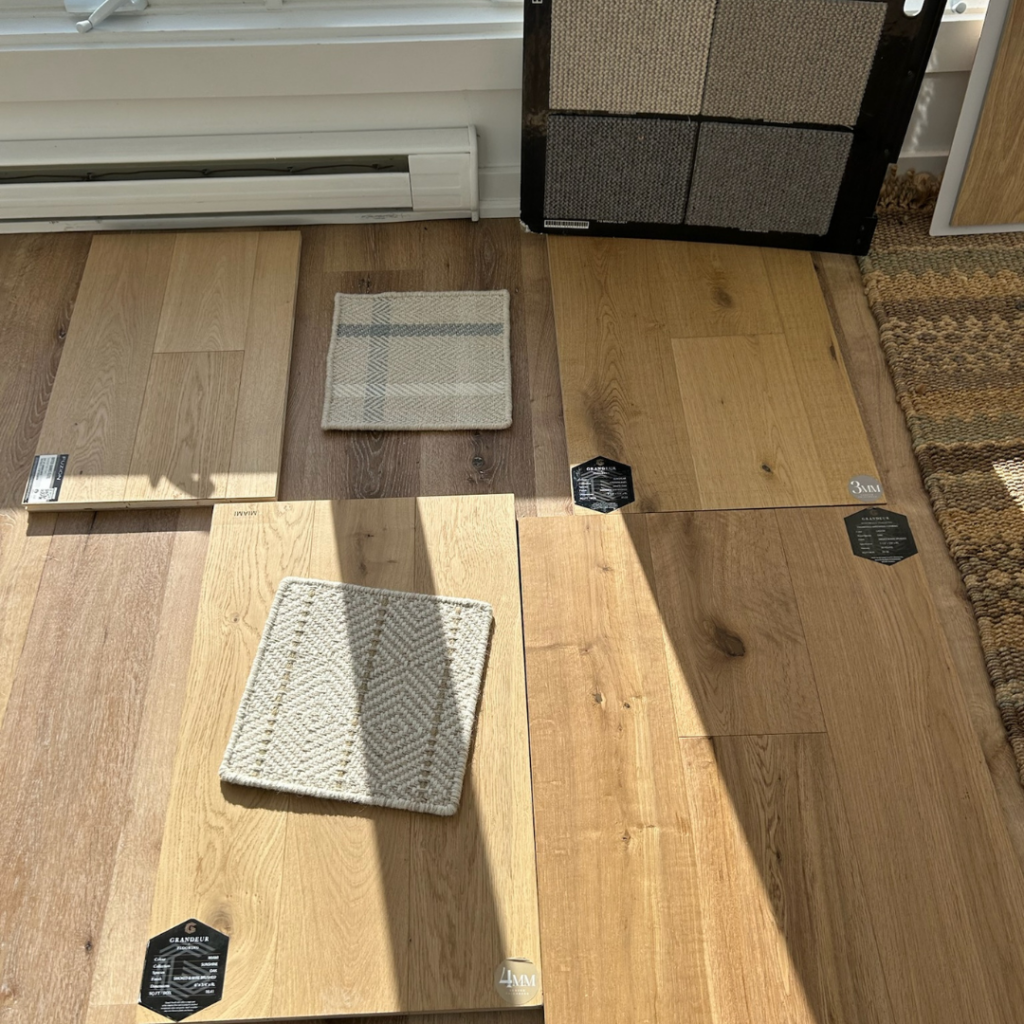
Now, when it comes to the primary bedroom, I have to admit… I might be caving. Roger wants wool carpet in there, and I get it—there’s something luxurious about stepping onto soft, cozy wool first thing in the morning. And since I’m getting my way with wood throughout the main living areas, I might just let him win this one.

But one thing’s for sure: the heart of our home—the great room, kitchen, and dining area—will have hardwood. For me, that’s what gives a home that timeless, classic lakehouse feel.
So, What Am I Choosing?
White Oak. Always White Oak.
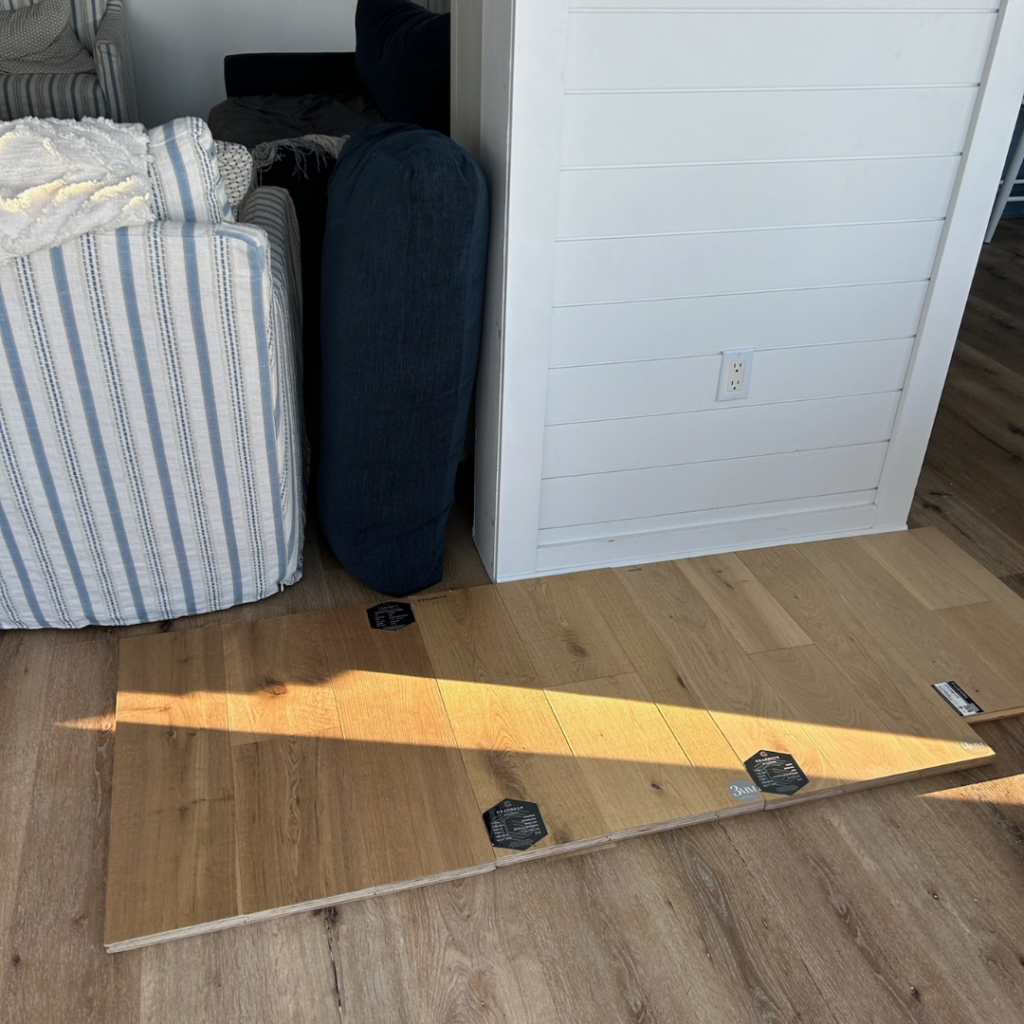
It’s timeless. White oak works with any design style—modern, traditional, coastal, cottage. It never looks dated.
It has the perfect grain. Not too busy, not too flat—just enough movement to add character without stealing the show.

The undertone is neutral. Unlike red oak (which leans pink) or some European oaks (which can go gray), white oak is that perfect light brown that doesn’t fight with other wood tones.
Right now, I’m torn between a few beautiful white oak options. Each has a matte finish, wide planks, and a soft, natural tone. I want something that looks warm but not too yellow, has just enough variation to feel natural, but not too rustic.
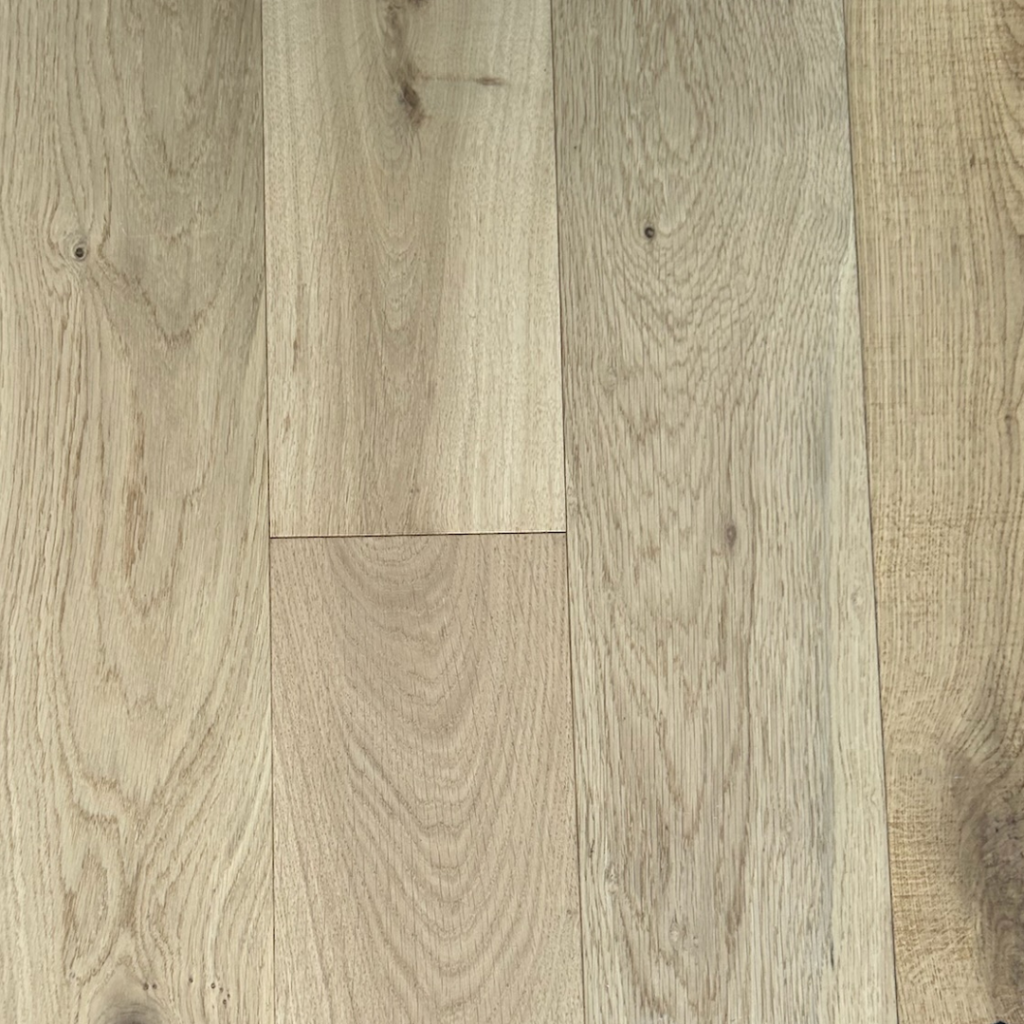
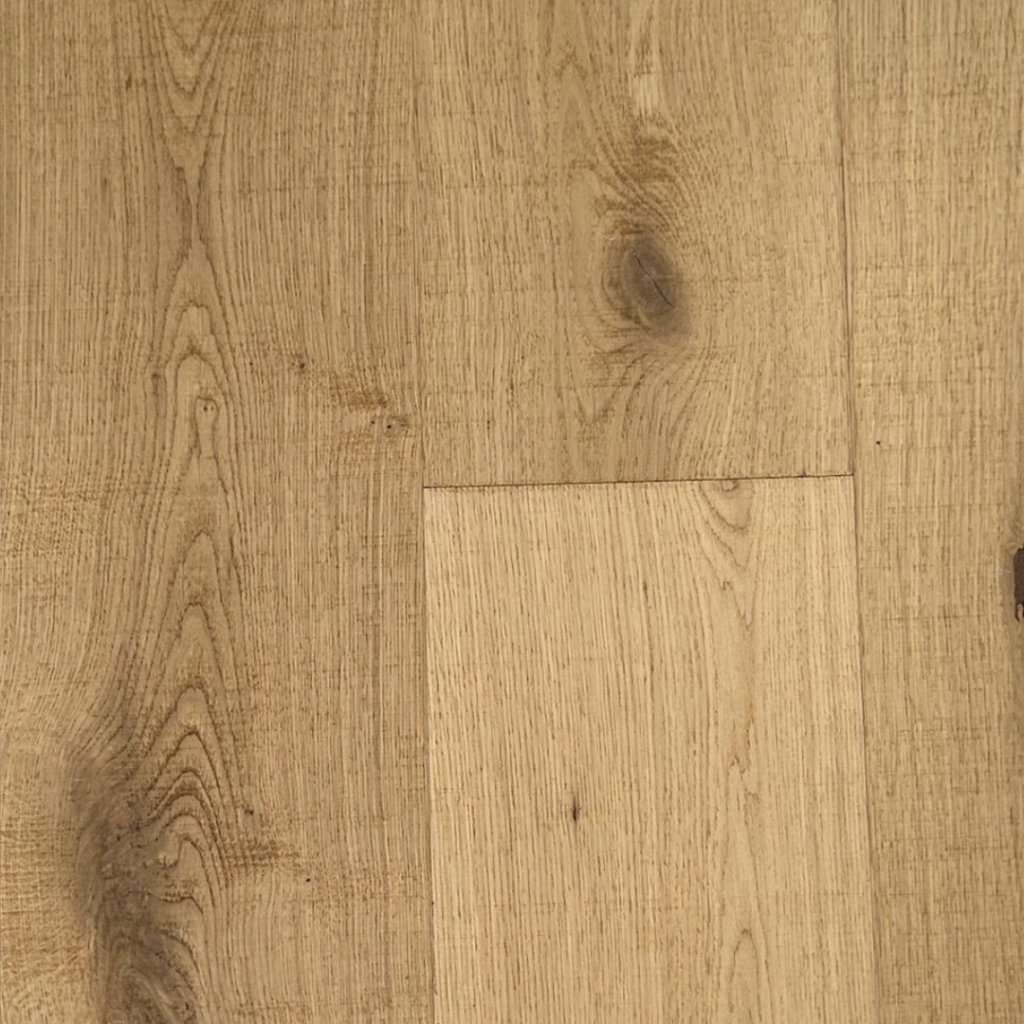
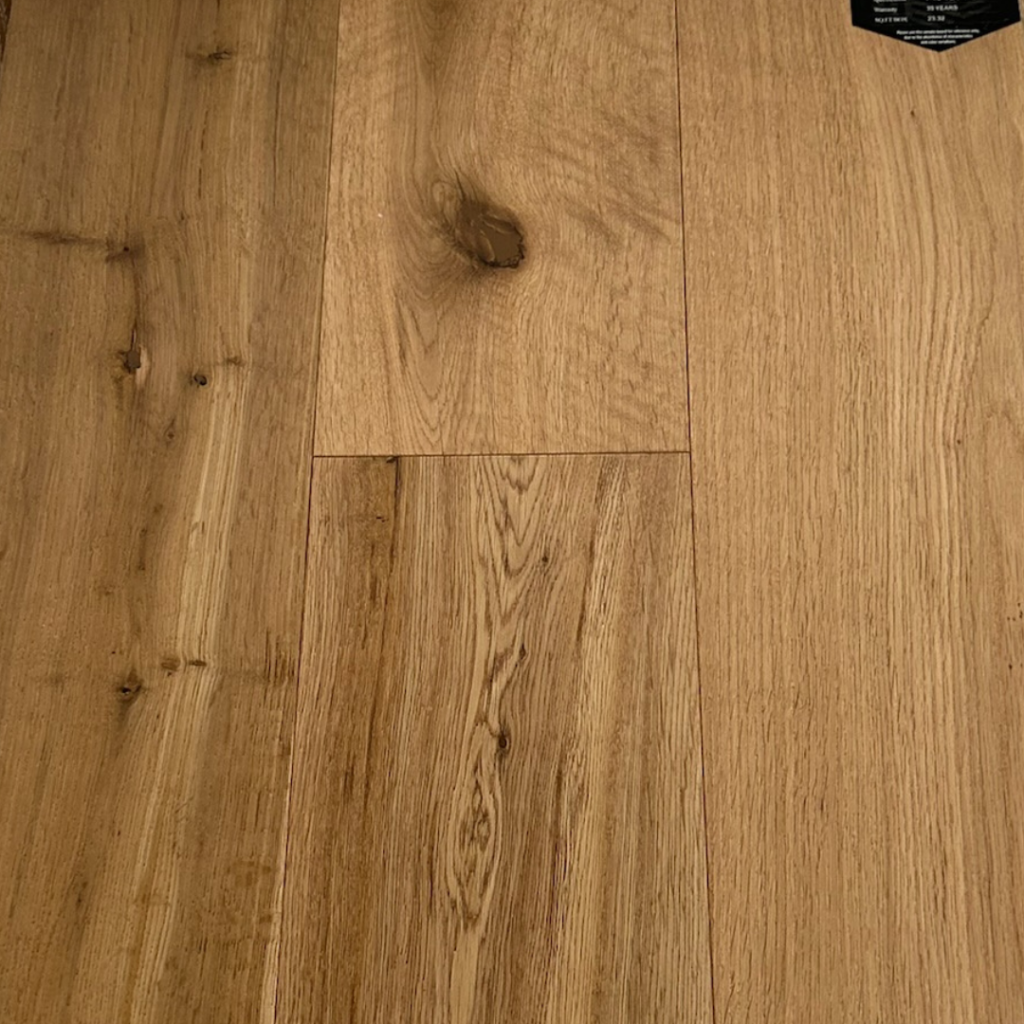
Here’s a peek at my top contenders—which one would you choose? (Comment below or DM me—I love hearing your thoughts!)

Final Thoughts (And My Best Advice for Choosing Flooring)
If you’re picking floors, here’s what I tell my clients:
Always bring home samples. The showroom lighting is not your home lighting. What looks perfect under bright store lights can read too yellow, too gray, or too dark at home.
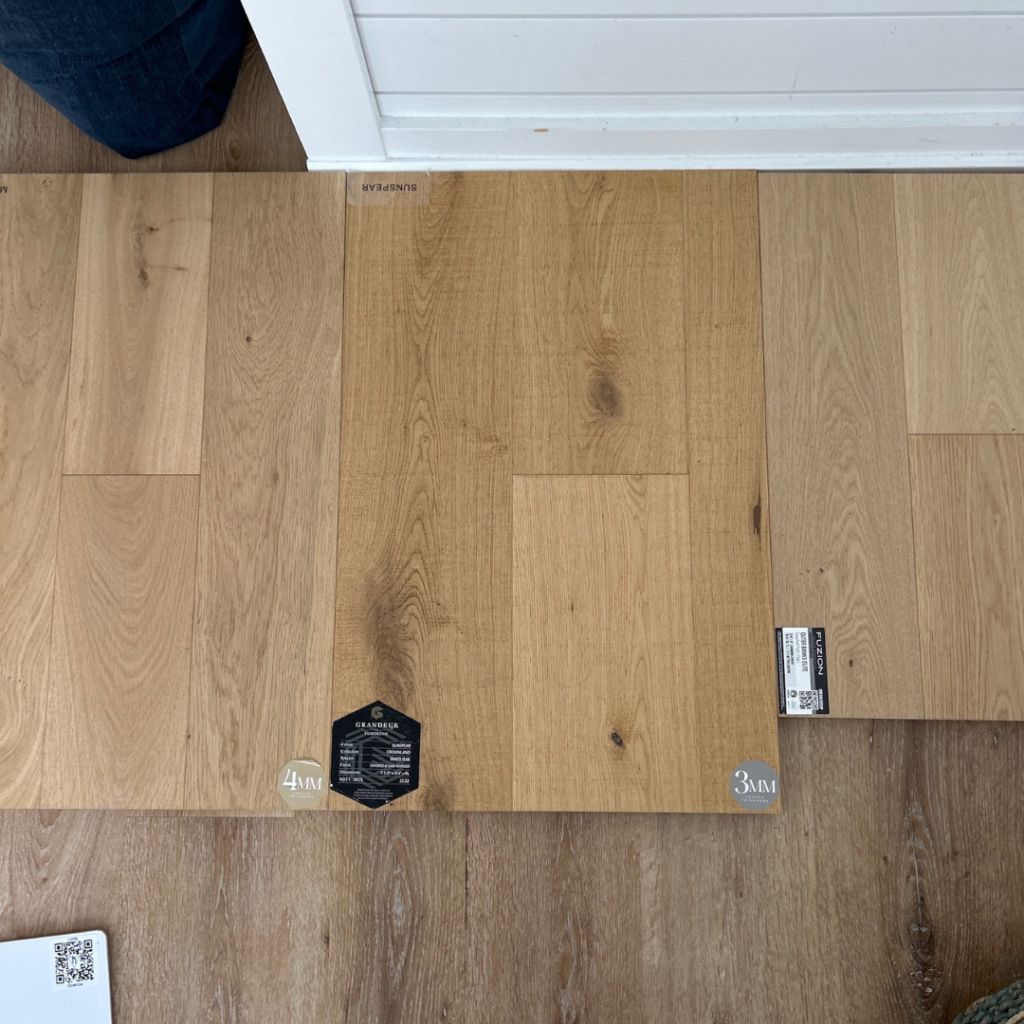
Think about longevity. Floors are expensive and hard to change. Avoid trends and go for something classic that works with multiple styles.
Test them in different lighting. Morning, afternoon, evening, natural light, overhead light—they all affect how the colour looks. [For more tips on how to test samples properly click here!]
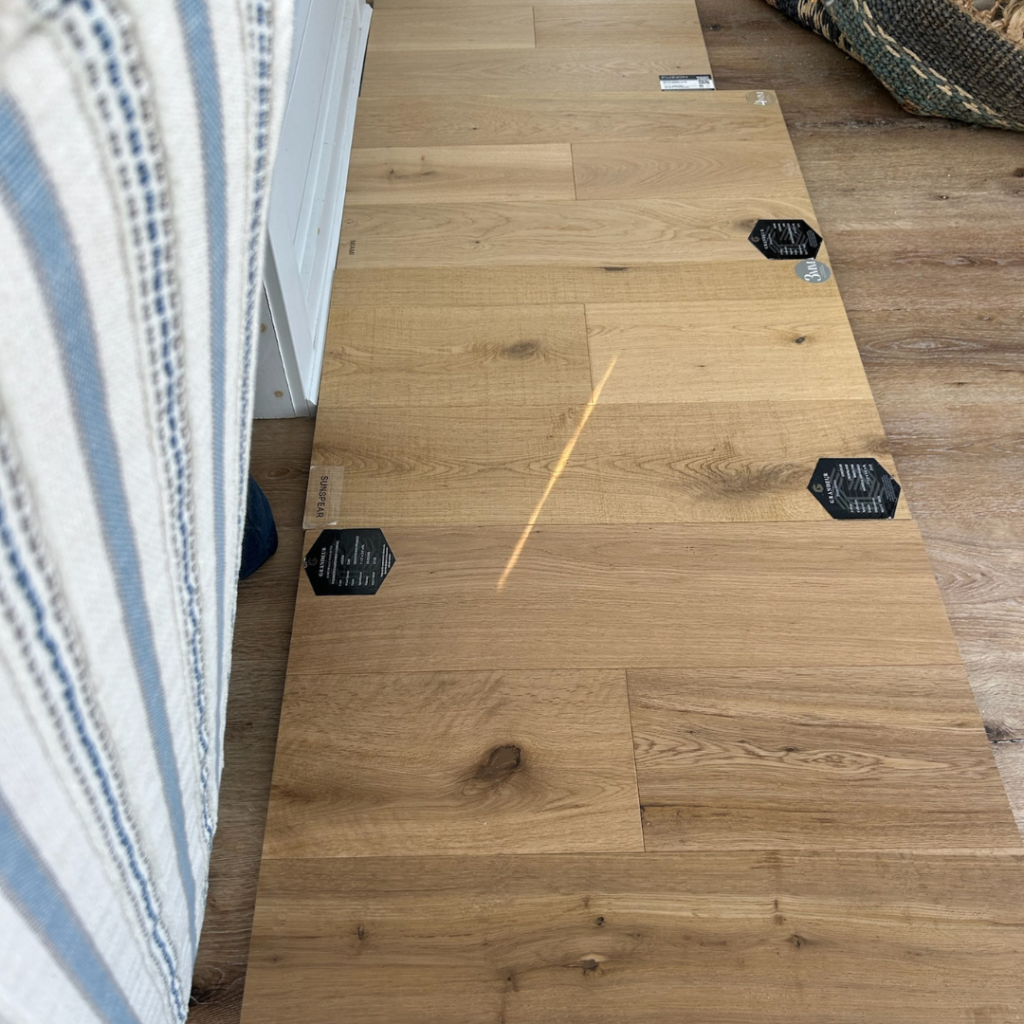
Consider how it will wear. If you have kids, dogs, or a busy household, look for a matte finish and a durable wear layer.
And finally—don’t rush it. This is a decision you want to get right the first time. Take your time, compare options, and choose something you love every time you walk through the door.

Your Turn—Help Me Choose!
Now that I’ve narrowed it down to a few gorgeous white oak options, I’d love to hear what you think! Which one would you choose? Drop a comment below or head to my Instagram Stories where I’ll be sharing the samples in real time!


